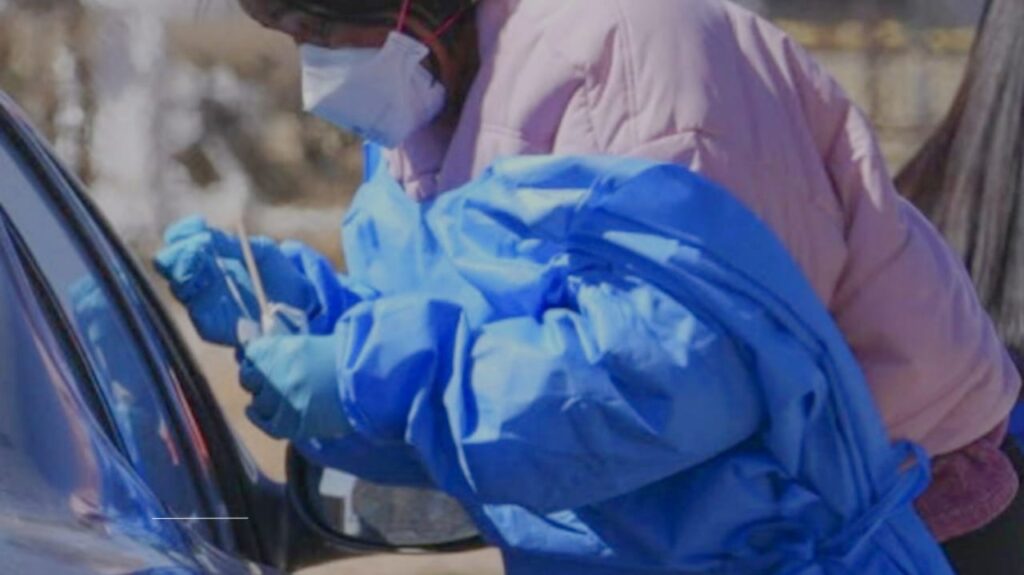
In early 2025, Texas health officials sounded the alarm as measles cases surged across the state, marking the largest outbreak in over a decade. By mid-February, over 200 confirmed cases were reported, primarily in urban and suburban areas like Houston, Austin, and Dallas-Fort Worth. Hospitals saw children battling high fevers, rashes, and respiratory complications, while schools scrambled to contain exposures. This outbreak highlights a troubling trend: declining vaccination rates and the resurgence of a disease once declared eliminated in the U.S.
Understanding Measles: A Highly Contagious Threat
Measles isn’t just a “childhood rash.” Caused by the rubeola virus, it spreads through airborne droplets when an infected person coughs or sneezes. The virus can linger in the air for up to two hours, making it one of the most contagious diseases known—far more than COVID-19 or influenza. Symptoms start with fever, cough, and red eyes, followed by a distinct red-brown rash.
While most recover, measles can lead to severe complications, especially in children under five and immunocompromised individuals. Pneumonia, encephalitis (brain swelling), and even death occur in 1-3 out of every 1,000 cases. According to the CDC, 1 in 5 unvaccinated people with measles require hospitalization.
Texas Outbreak by the Numbers
- Confirmed Cases: 217 (as of February 22, 2025)
- Hospitalizations: 48 children, 12 adults
- Affected Counties: 15, including Harris, Travis, and Tarrant
- Median Age: 4 years (75% under age 10)
The outbreak’s epicenter is a suburban Austin school where an unvaccinated student contracted measles during international travel. Within weeks, 32 cases linked to the school emerged. “This is a textbook example of how quickly measles can spread in under-vaccinated communities,” said Dr. Lisa Nguyen, an Austin pediatrician.
Vaccination Gaps: Herd Immunity at Risk
The MMR (measles, mumps, rubella) vaccine is 97% effective with two doses. Texas once maintained a 95% vaccination rate among kindergarteners, meeting the herd immunity threshold of 92-95% needed to protect vulnerable populations. But by 2025, statewide rates dropped to 88%, with pockets as low as 70% in rural areas.
Why the Decline?
- Non-Medical Exemptions: Texas allows exemptions for “reasons of conscience,” which 3.5% of students used in 2024—up from 1% in 2010.
- Misinformation: False claims linking vaccines to autism or infertility circulate on social media. A 2024 University of Texas study found 25% of parents distrust vaccine safety data.
- Access Barriers: Rural clinics face funding cuts, delaying routine immunizations.
Public Health Crisis Mode: Containment Efforts
Texas health teams launched aggressive measures:
- Isolation Protocols: Infected individuals ordered to quarantine for 21 days.
- Contact Tracing: Over 2,000 exposures identified; unvaccinated contacts advised to quarantine.
- Pop-Up Clinics: 15,000 MMR doses administered in outbreak zones within three weeks.
- School Mandates: Temporary bans on unvaccinated students attending schools with exposures.
“Speed is critical,” said Dr. Mark Hernandez, a Texas DSHS epidemiologist. “Every delay risks exponential spread.”
Voices from the Frontlines: Hospitals and Families
At Houston Children’s Hospital, staff described overwhelmed isolation wards. “We’ve seen kids on ventilators and one case of encephalitis. This was preventable,” said nurse Clara Rodriguez.
The outbreak also spotlighted families caught in the crossfire. San Antonio mother Emily Torres shared her toddler’s ordeal: “He was too young for the vaccine. We relied on herd immunity, but it failed us.” Her son spent five days hospitalized with pneumonia linked to measles.
Vaccine Hesitancy: Myths vs. Science
Misinformation remains a stubborn hurdle. A Dallas parent group, “Texans for Health Freedom,” argued on social media that “natural immunity” is safer than vaccines—a claim debunked by decades of research. Measles infection, unlike vaccination, suppresses the immune system for months, increasing susceptibility to other diseases.
Dr. Rhea Malik, an infectious disease specialist, counters: “The MMR vaccine has prevented 31 million deaths globally since 2000. The science is clear.”
Policy Battles and Legal Challenges
Texas lawmakers recently debated ending non-medical exemptions. Similar policies in California (2015) and New York (2019) boosted vaccination rates by 10-15%. However, Texas bills face opposition. Governor Greg Abbott previously vetoed stricter exemption laws, citing parental rights.
School districts, meanwhile, enforce existing rules. After 12 cases linked to a Fort Worth elementary school, 120 unvaccinated students were temporarily barred from attending. “Our priority is protecting all children, not individual preferences,” said superintendent Maria Gonzalez.
Lessons from History: Measles’ Comeback
The U.S. declared measles eliminated in 2000 but has faced recurrent outbreaks since 2019, including 1,274 cases in 2019—the highest since 1992. Globally, cases rose 43% in 2023 due to pandemic-related immunization disruptions.
“Elimination doesn’t mean eradication,” warned Dr. Walter Orenstein of Emory University. “Until global vaccination improves, outbreaks will continue.”
The Road Ahead: Bridging the Immunity Gap
Health workers emphasize community engagement. In Austin, local clinics partner with faith leaders to host vaccine forums. “We’re addressing fears respectfully, not dismissing concerns,” said Rev. Samuel Cole, whose church hosted a vaccination drive.
Pediatricians also push for stricter exemption policies. “Philosophical exemptions have no place in public health,” argued Dr. Nguyen. “They endanger kids who can’t get vaccinated for medical reasons.”
